Overview of Company Takeover
In the era of growing competition, dynamism and technologies, existing businesses face several challenges to sustain their existence. For this, they tend to undergo several structural modifications to strengthen their financial performance and market position. The various growth-oriented strategies used by corporates houses to enter new markets and expand their market base include Merger, Amalgamation, Acquisition and Company Takeover.
In India, company takeover is one of the most preferred growth-oriented strategies. It is a process in which one company acquires control over another by purchasing the majority stake in that company. The company acquiring the majority stake is known as the Bidder or Acquirer, and the company whose control is acquired is known as the Target Company.
Advantages of Company Takeover
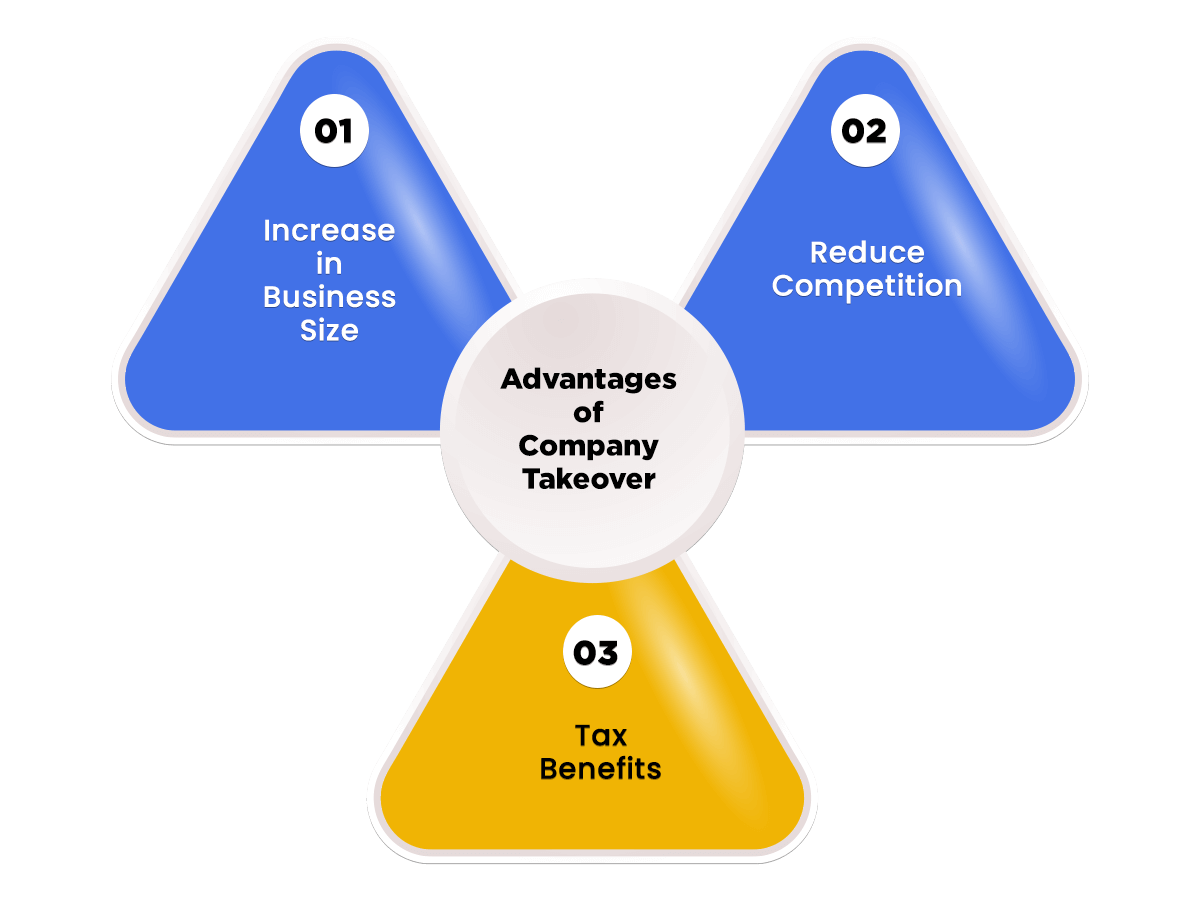
The advantages of Company Takeover are as follows:
- Increase in Business Size
Takeover is the best way for a company to expand its business operation in a short duration.
- Reduce Competition
When a bidder company acquires the controlling stake in a target company, it directly reduces the competition in the market.
- Tax Benefits
In a company takeover, the losses incurred by an acquirer company are set-off against the profits of a target company, thereby reducing the net taxable income.
Regulatory Framework for Company Takeover
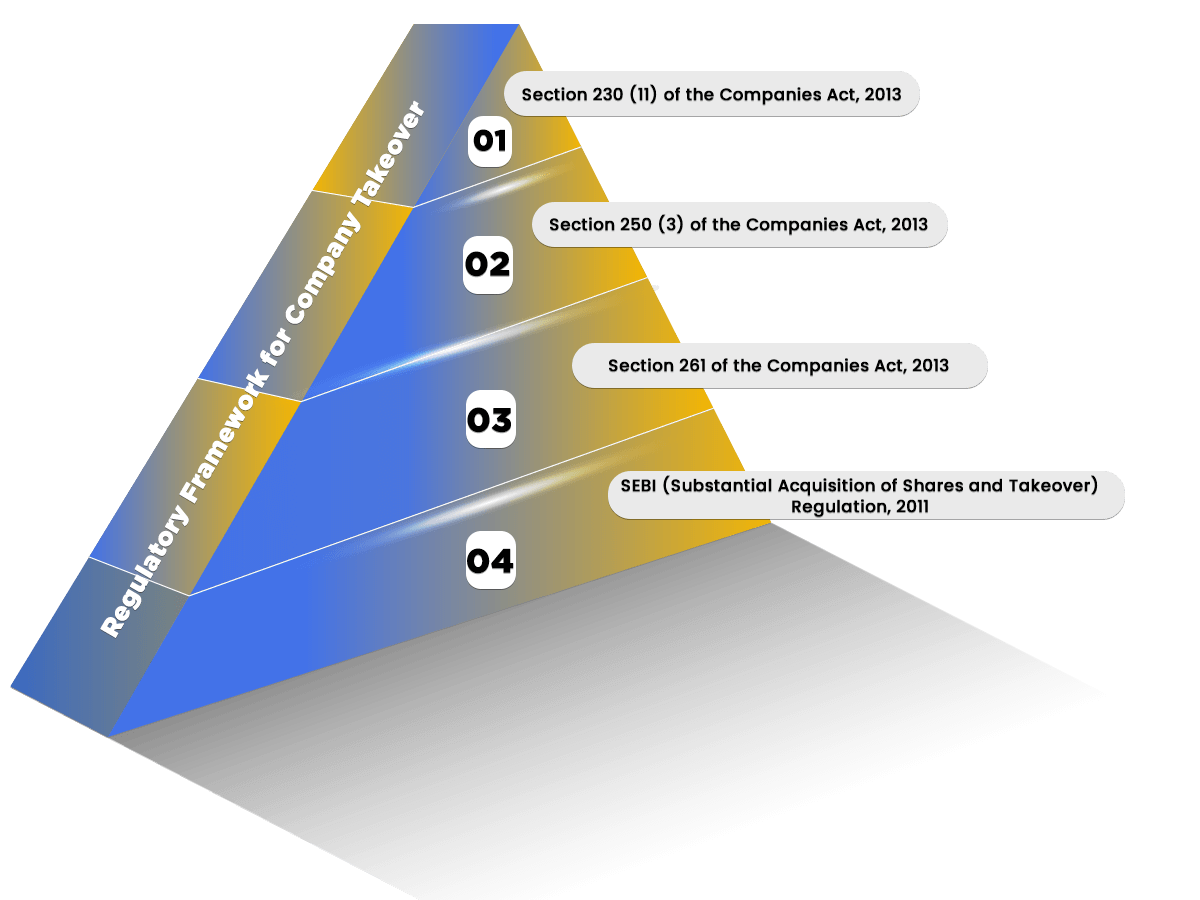
In India, the legal provisions regulating the Company Takeover are as follows:
- Section 230 (11) of the Companies Act, 2013
This Section deals with every form of compromise and arrangement.
- Section 250 (3) of the Companies Act, 2013
As per this section, NCLT has the power to direct any company administrator to take over the assets and management of that company.
- Section 261 of the Companies Act, 2013
According to this section, NCLT authorises a company administrator to prepare a scheme of rehabilitation and revival, including the takeover of a sick company by a solvent company.
- SEBI (Substantial Acquisition of Shares and Takeover) Regulation, 2011
The provisions of SEBI govern the process of takeover by a listed company.
Reasons to Choose Company Takeover
The reasons for choosing a Company Takeover can be summarised as:
- To achieve growth by advanced technologies, market enhancement and product development of the target company;
- To diversify the existing product line and market of the bidder company by entering into a new market;
- To increase productivity and profitability of the acquirer company;
- To increase the market size of the acquirer company.
Types of Company Takeover
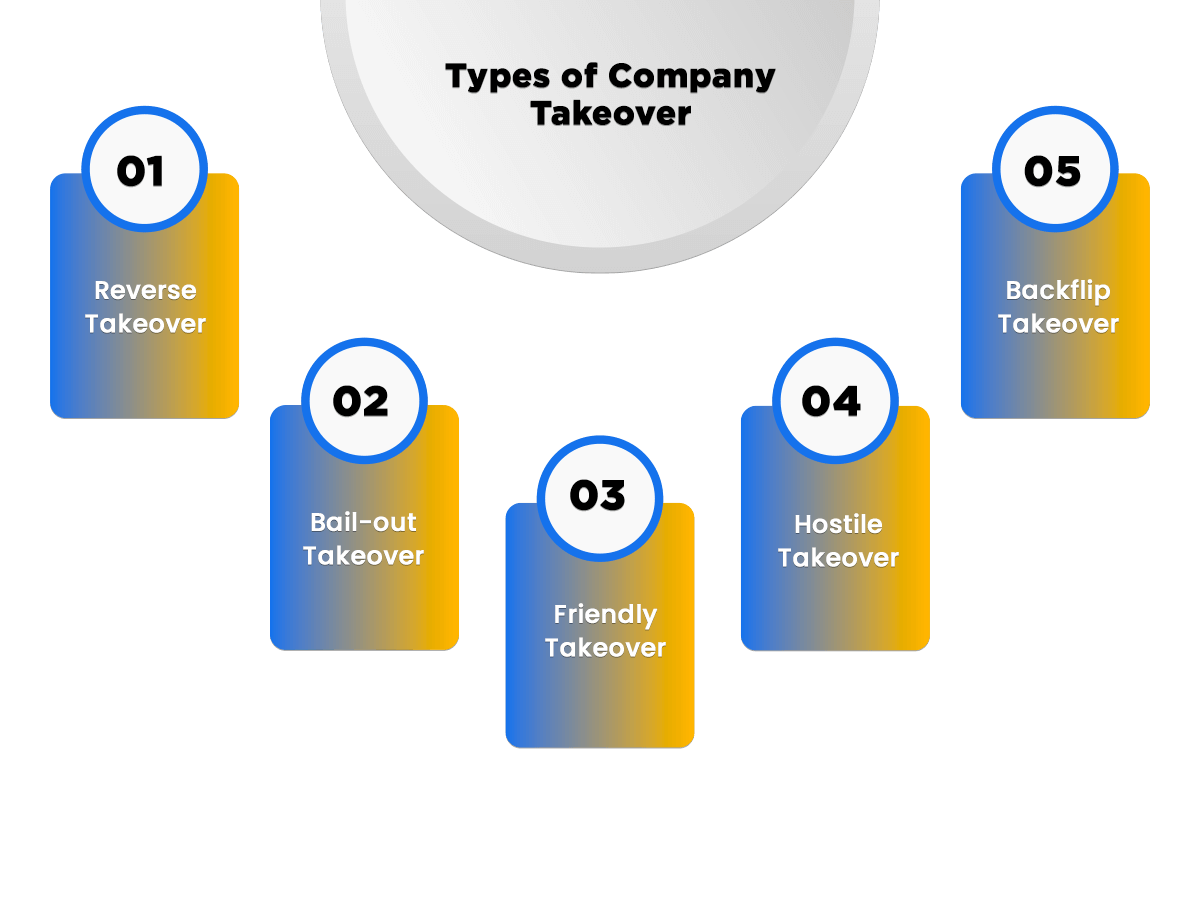
The different types of Company Takeover in India are as follows:
- Reverse Takeover
In Reverse Takeover, a private company decides to acquire a public listed company to become eligible to list its shares at a recognised stock exchange without undergoing the process of Initial Public Offer.
- Bail-out Takeover
In this, a profit-earning company acquires a sick company to bail it out from the process of liquidation.
- Friendly Takeover
When the acquirer company takes the consent of the target company before undergoing the process of Takeover, it is known as the Friendly Takeover. Therefore, it is a process where both the parties mutually agree to the terms and conditions of a takeover.
- Hostile Takeover
This takeover is opposite to a friendly takeover. In this, the acquirer company does not obtain any prior consent of the target company and forcefully pursues the process of takeover.
- Backflip Takeover
In Backflip Takeover, an acquirer company decides to become the subsidiary of the target company.
Company Takeover Checklist
The steps involved in the process of evaluating a decision for Takeover are as follows:
- Planning
An acquirer company needs to first analyse the industry by reviewing the overall objective of takeover in context of the strength, opportunities, weakness and threats (SWOT). It also involves going through other factors like management quality, capital structure and market size. before Company Takeover.
- Screening of Candidates
The company needs to search and short-list the suitable candidates for takeover by taking into consideration, all the relevant factors mentioned above.
- Financial Evaluation
The points to be considered while evaluating the financial health of a company are as follows:
- Cash flows;
- Maximum price payable for takeover;
- Method to finance the Takeover.
Strategies of Company Takeover

In India, the different types of strategies that can be followed by the companies are as follows:
- Casual Pass
In this strategy, the acquirer company normally contacts the Target Company through a formal inquiry or intermediary. If the Target Company rejects the initial offer, the acquirer company can either to choose to walk away or adopt a friendly approach. It can also adopt more aggressive strategies of taking over the Target Company.
- Bear Hug
According to this, the Acquirer Company offers to purchase the shares of a Target Company at a price higher than the market price.
- Tender Offer
In a tender offer, a bidder makes an offer to the public in the form of an invitation or open letter, or by publishing in a newspaper or through advertisement to the shareholders of the public companies to sell their shares at a prescribed time and price.
- Proxy Fights
In this, the acquirer company forces the shareholders of the target company to either agree or gather proxies to win the corporate vote. According to this method, shareholders of the target company vote out the management for making the process of takeover easier.
- Stock Repurchase
This strategy is also known as the Self Tender Offer in which the target company repurchases its shares from the shareholders. This technique is one of the most effective Anti-Takeover Strategies.
Procedure for Company Takeover
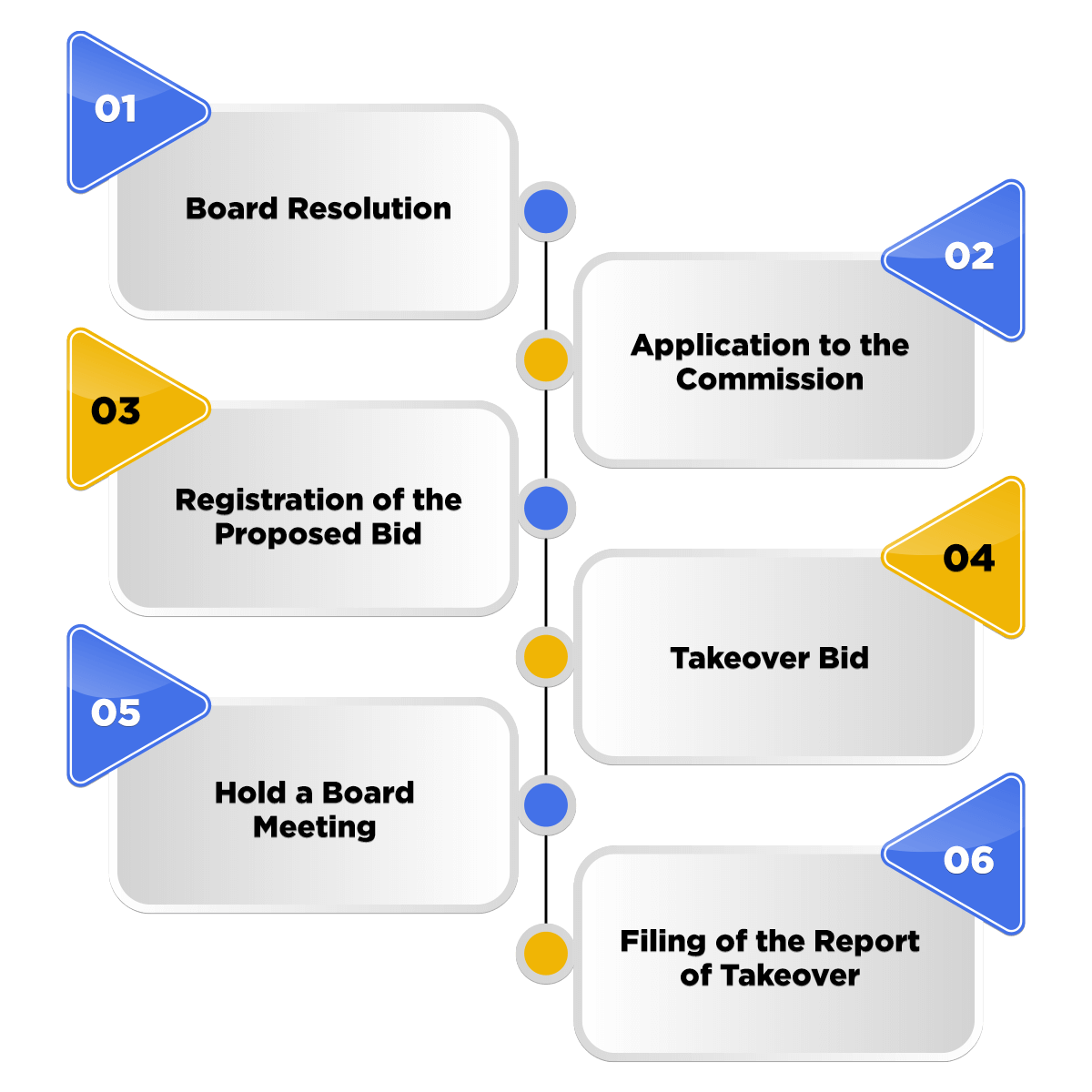
After completing the steps involved in the company takeover checklist, an acquirer company can proceed further with the process of Company Takeover in India. The process of company takeover can be summarised as:
- Board Resolution
The directors of an acquirer company need to pass a board resolution to approve Bidding for the shares of a target company.
- Application to the Commission
The company needs to apply with the commission by filing an application for the approval of takeover bid. The company files the application together with the following attachments:
- Takeover Bid;
- Information Memorandum;
- NOC (No Objection Certificate) from the relevant government authority.
- Registration of the Proposed Bid
After receiving the approval, the acquirer company needs to file an application to register the proposed bid again with the commission.
- Takeover Bid
After obtaining the registration, the acquirer company can proceed further with the takeover bid by sending it to the target company.
- Hold a Board Meeting
After receiving the takeover bid, the target company holds a board meeting and accepts that 90% of its shares are subject to acquisition.
- Filing of the Report of Takeover
Once the process of Takeover is complete, the acquirer company files a report of takeover within seven days of the conclusion of Takeover to the commission.
Consideration of Company Takeover

The term ‘consideration’ refers to the amount paid for the acquisition of the target company. The different forms of paying consideration are as follows:
- In the form of Cash
When the acquirer company pays the consideration for the shares acquired in the form of cash to the target company.
- In the Form of Shares
When the acquirer company decide to allot its shares to shareholders of the target company in proportion to their previous shareholding.
- By Forming a New Company
An acquirer company can form a new company by acquiring shares of the target company. After that, shareholders of both the companies are allotted shares of the newly structured company.
- By Acquiring Minority Shares
An acquirer company can plan to acquire at least 50% of the shares of the Target Company.
Difference between Merger and Company Takeover
|
Point of Difference |
Merger |
Company Takeover |
|
Definition |
When two or more companies mutually decide to combine and form a new company, it is known as Merger. Therefore, the process of merger means consolation of multiple businesses into one. |
It is the legal act where one company acquires another company & becomes its new owner. |
|
Dissolution |
In Merger, both the companies dissolve to structure a new company. |
The target company automatically gets dissolved when it gets acquired by the acquirer company. |
|
Shareholding |
The shareholding of both the companies are surrendered and fresh shares of the new company are issued to the shareholders. |
Shares of the target company are transferred to the bidder company. |
|
Size of the companies |
In the process of merger, both the companies are comparatively of the same size and structure. |
A profit-earning company takes over a sick company and becomes the owner of the formed company. |
|
Types |
The types of mergers are Vertical, Horizontal, Conglomerate, Co-centric, Forward, Cash and Backward Merger. |
The types of takeovers are Bail-out, Friendly, Hostile, Reverse and Backflip. |
Difference between Company Takeover and Acquisition
|
Acquisition |
Company Takeover |
|
An acquisition is similar to a company takeover as in both the cases, one company acquires the other. However, an acquisition is carried out in a pre-planned manner in which both the companies mutually agree. |
In a Company takeover, a bidder company acquires the major controlling stake in the target company. |
|
Acquisition is a pre-planned operation. |
Company Takeover is a Hostile Act. |
|
Acquisition is based on the concept of a mutual decision. |
Company takeover is not based on the concept of a mutual decision. |
FAQs of Company Takeover
The steps included in the procedure to take over a company in India are determining the market; identification of candidates; evaluation of financial position; take the final decision; assessing the value of the market; Due Diligence; and Implementing Takeover.
The term “Hostile Takeover” denotes a situation in which an acquirer company does not obtain any prior consent of the target company and forcefully pursues the process of a takeover.
The term “Takeover” denotes a process in which one company acquires control over another by purchasing the majority stake in that company.
The main difference between the both is that the former is a Hostile Act. In contrast, the latter is a pre-planned and orderly act.
The different types of Takeover Strategy are Casual Pass, Bear Hug, Tender Offer, Proxy Fights, Stock Repurchase, etc.
Yes, Hostile Takeover is an Ethical Act.
The steps to survive a corporate takeover are Plan for the worst situation, Plan for the best situation, Prepare your elevator pitch, let the executive team know that you are prepared, and Update all your technical information and documentation.
The regulations that are governing the concept of takeover Section 230 (11) of the companies Act 2013, SEBI (Substantial Acquisition of Shares and Takeover) Regulation 2011, Section 250 (3) of the Companies Act 2013, Section 261 of the Companies Act 2013.
The different types of a takeover are Friendly Takeover, Hostile Takeover, Reverse Takeover, Bail-out Takeover, Back Flip Takeover, etc.
A takeover bid is a kind of corporate action in which a company makes an offer to acquire another corporation.
The company acquiring the majority stake is known as the Bidder or Acquirer, and the company whose control is acquired is known as the Target Company.
The term “Company Takeover Checklist” includes Planning, Screening of Candidates, and Financial Evaluation.
The points to be considered for the Financial Evaluation of the company are Cash Flows, Maximum Price paid for Takeover, and the Method to Finance Takeover.
The steps included in the process are Passing of Board Resolution, Application to the Commission, Registration of the Proposed Bid, Takeover Bid, Hold a Board Meeting, and Filing of the Report of Takeover.
The term ‘consideration’ refers to the amount paid for the acquisition of the target company.
The different forms of paying consideration are cash, shares, by forming a new company, and by acquiring minority shares.
The term “Company Takeover” denotes a legal act where one company acquires another company and becomes its new owner.
The main reasons are to achieve growth by advanced technologies; and market enhancement, product development.
Yes, the process of company takeover assists in diversifying the existing product line of the bidder company by entering into a new market.
Yes, the process of Company Takeover assists in increasing the Productivity and Profitability of the Acquirer Company.
Yes, the process of Company Takeover assists in increasing the Market Size of the Acquirer Company.
The benefits of company takeover are increase in business size, reduce competition, and tax benefits.
When the Acquirer Company offers to purchase the shares of a Target Company at a price higher than the market price, it is known as Bear Hug.
The other name for the Stock Repurchase strategy is Self Tender Offer.
The term “Back Flip Takeover” denotes a situation in which an acquirer company decides to become the subsidiary of the target company.
When a profit-earning company acquires a sick company to bail it out from the process of liquidation, the same is known as Bail-out Takeover.
When a bidder makes an offer to the public in the form of an invitation or open letter, or by publishing in a newspaper or through advertisement to the shareholders of the public companies to sell their shares at a prescribed time and price, the same is known as Tender Offer.
When the acquirer company takes the consent of the target company before undergoing the process of Takeover, it is known as the Friendly Takeover.
The main aim behind the process of screening is that the company needs to search and short-list the suitable candidates for takeover.
When a bidder company acquires the controlling stake in a target company, it automatically reduces the competition in the market.
In a company takeover, the losses incurred by an acquirer company are set-off against the profits of a target company, thereby reducing the net taxable income.


